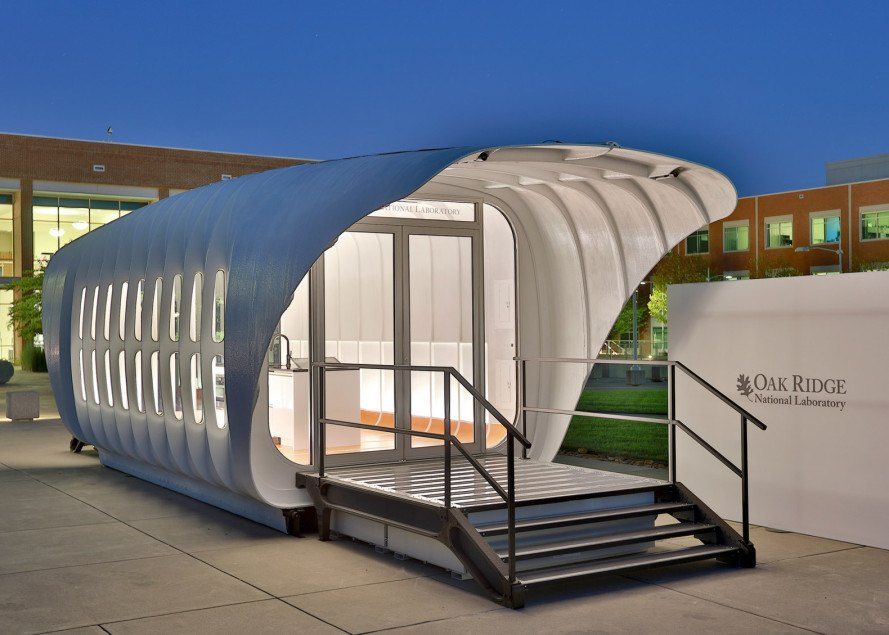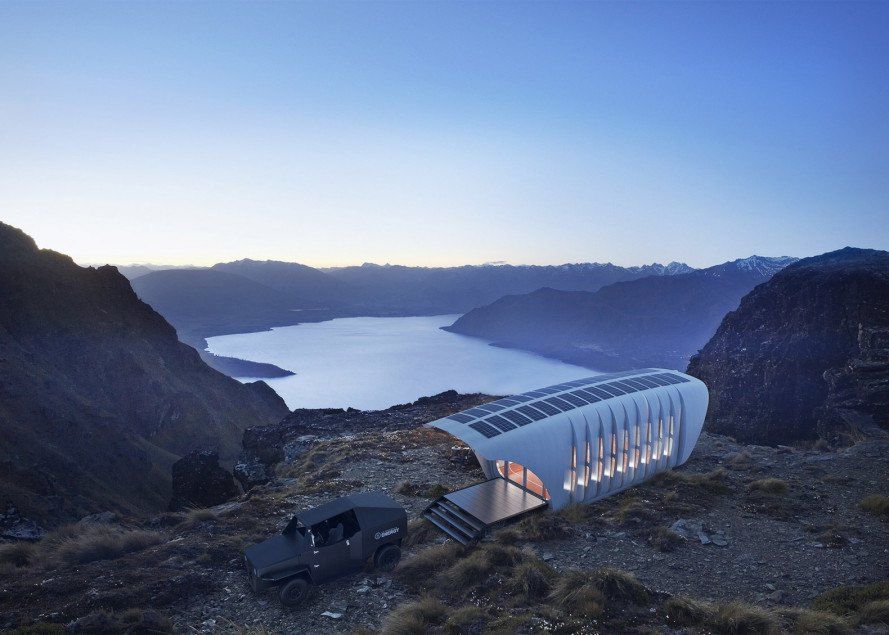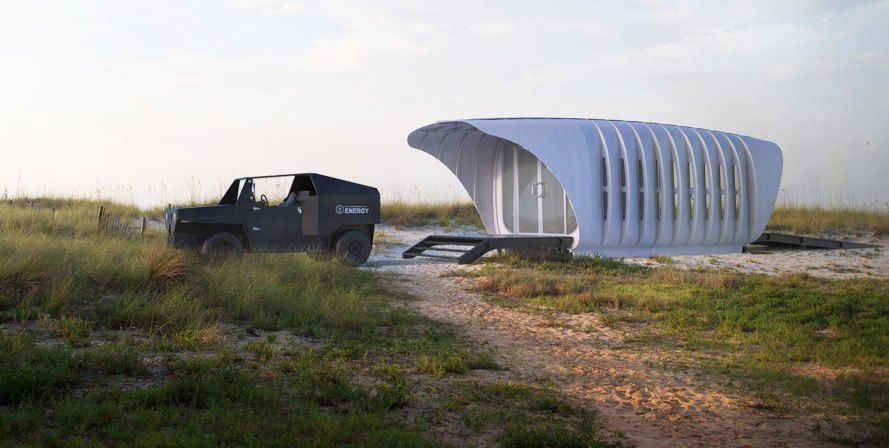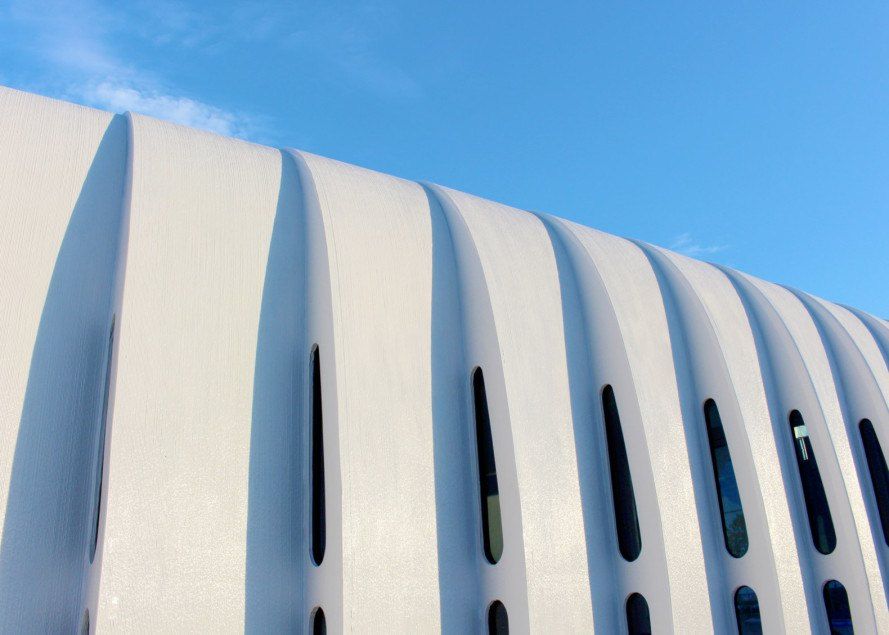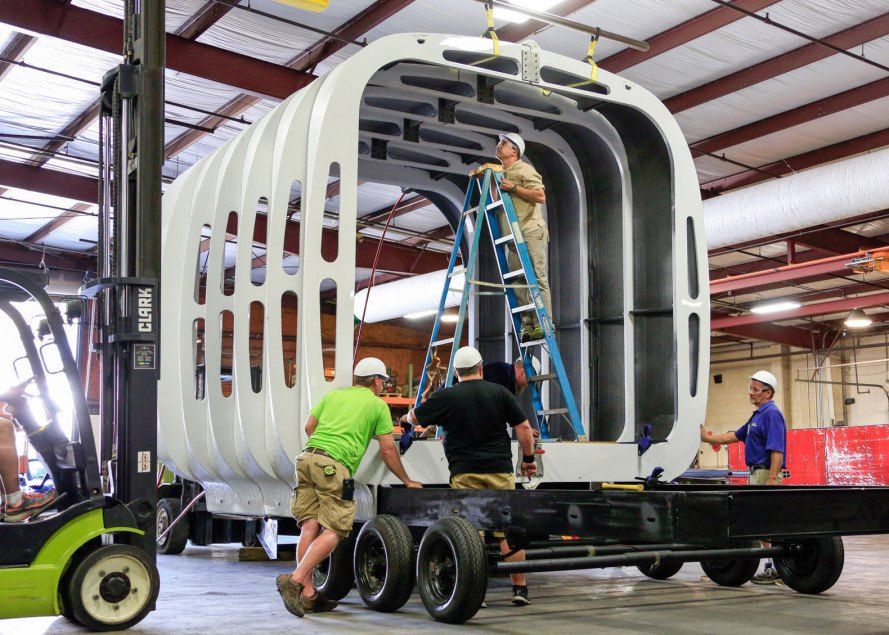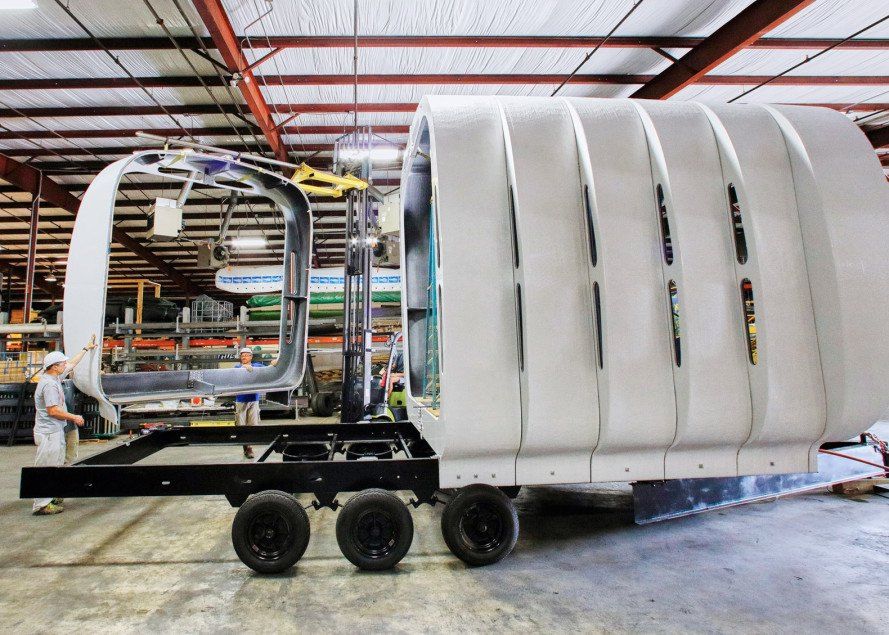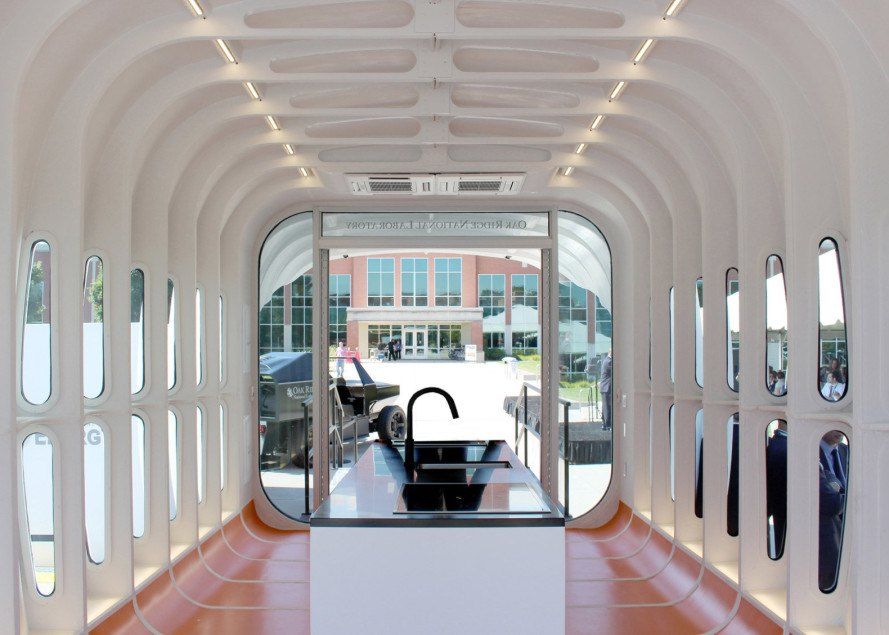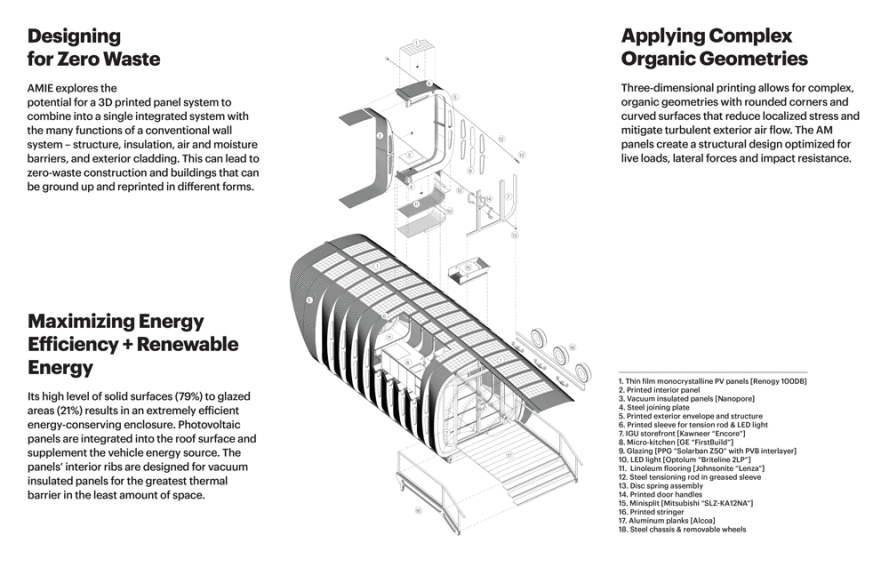3D Printed Building From Polymer
As a result of the collaboration between Architecture Company SOM, the U.S. Department of Energy’s Oak Ridge National Laboratory, and several industry partners, a curved pavilion has been developed which is the world’s largest 3D-printed polymer structure. A closed-loop battery system connects it to a motorized vehicle. The construction was part of an initiative called The Additive Manufacturing Integrated Energy (AMIE) and presented to the public at the International Builders’ Show in Las Vegas between 19 and 21 January 2016. The objective was the exploration of new means to generate, store, and use electrical power within a 3D printed construction. The pavilion is comprised of multifunctional 3D printed components, offering optimized usage of the material – per se the biggest advantage of the additive manufacturing method, known to eliminate construction waste. Now we have the chance to observe a highly innovative large scale module, consisting of organic C-shaped ribs that constitute the building envelope. They not only act as a surface’s membrane but also ensure moisture protection and isolation via air barriers. Photovoltaic panels, integrated on the van’s top, provide the house with energy. Using a bi-directorial charger, the 3D printed car also generates its own electricity, feeding the house via a wireless system. So both the components exchange power and create a symbiotic off-grid system. The futuristic prototype measures 38-feet in length, 13-feet in height, and 12-feet in width. AMIE’s high ratio of insulated solid surfaces (79 percent) to glazed areas (21 percent) results in an efficient energy-conserving enclosure. The project was created in the first year of the Governor’s Chair for Energy and Urbanism, a five-year collaboration of ORNL, SOM, and the University of Tennessee. Bringing science and design together, it illustrates the potential of a clean energy future for a rapidly urbanizing world, prepared to achieve independence from the power grid, says the firm.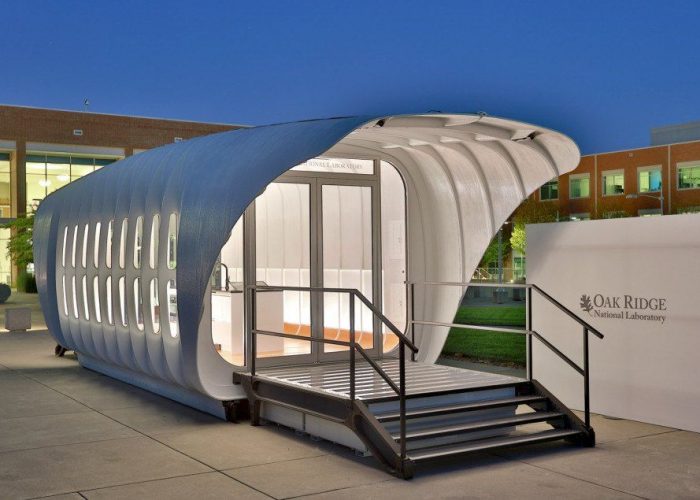
By: Sabina Karleva


